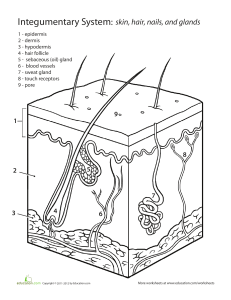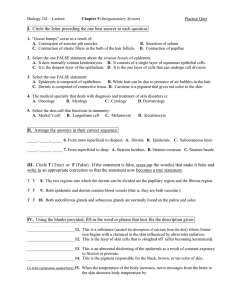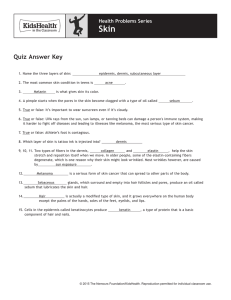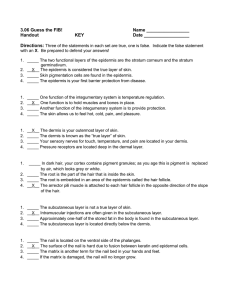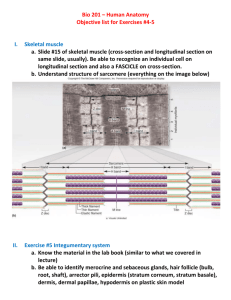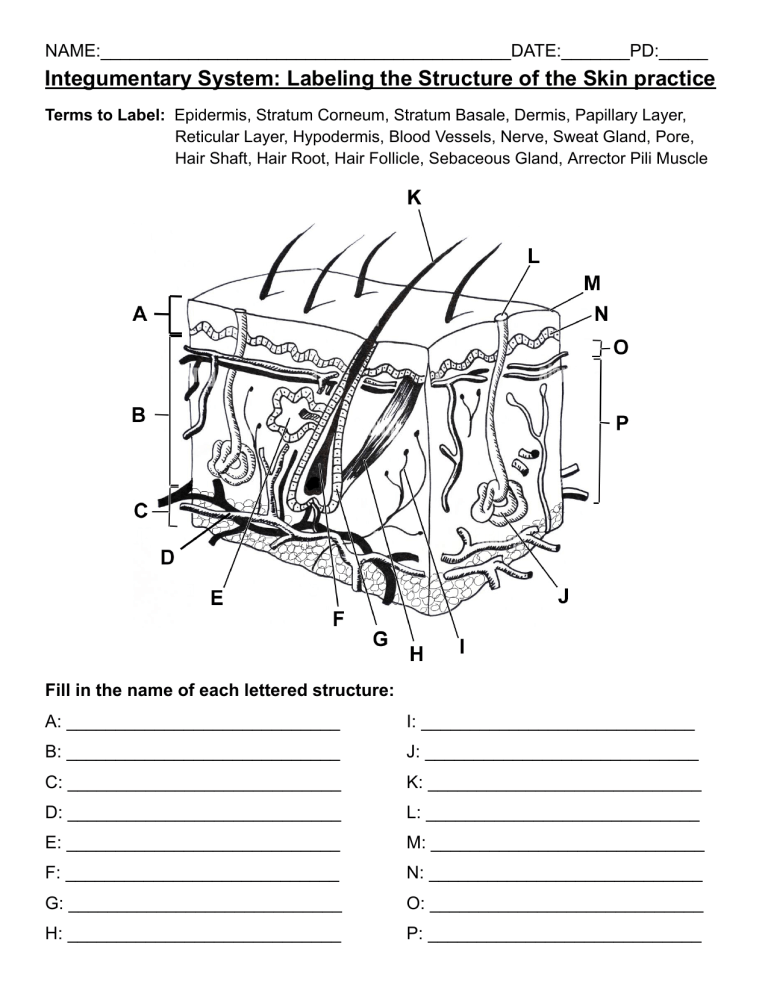
NAME:__________________________________________DATE:_______PD:_____ Integumentary System: Labeling the Structure of the Skin practice Terms to Label: Epidermis, Stratum Corneum, StratumBasale, Dermis, Papillary Layer, Reticular Layer, Hypodermis, Blood Vessels, Nerve, Sweat Gland, Pore, Hair Shaft, Hair Root, Hair Follicle, Sebaceous Gland, Arrector Pili Muscle Fill in the name of each lettered structure: A: ____________________________ I: ____________________________ B: ____________________________ J: ____________________________ C: ____________________________ K: ____________________________ D: ____________________________ L: ____________________________ E: ____________________________ M: ____________________________ F: ____________________________ N: ____________________________ G: ____________________________ O: ____________________________ H: ____________________________ P: ____________________________ Directions:Match the description in Column A withthe appropriate term in Column B. Write the correct letter on the line provided. Column A 1. ____The lower thicker layer of the dermis. Column B A. Epidermis 2. ____Outer layer of our skin, avascular, protects body from the environment B. Dermis 3. ____Protects skin from harmful UV rays C. Hypodermis 4. ____Bottom layer of epidermis; contains living, dividing cells that get pushed up to higher layers. D. Stratum Corneum(2) 5. ____Hard fibrous protein found in epidermal cells, hair, and nails. F. Papillary Layer(2) 6. ____Phase of wound healing, vasodilation occurs increasing blood flow, white blood cells fight off infection & clear debris. G. Reticular Layer(2) 7. ____The outermost layer of the epidermis, containing dead cells. I. Sebaceous Gland 8. ____Structure responsible for producing the hair. J. Arrector Pili Muscle 9. ____Used to provide nutrients, remove wastes, and regulate temperature. K. Blood vessels 10.____Specific layer consisting of dense irregular connective tissue containing collagen and elastin fibers. L. Hair follicle 11.____Produces and secretes a thick oily substance. N. Hair root 12.____The upper, thinner layer of the dermis. O. Hemostasis 13.____Protrudes from the skin surface. P. Inflammatory 14.____Secretes a liquid that functions to eliminate excess body heat. Q. Proliferation 15.____Cells that produce the pigment Melanin. R. R emodeling/ Maturation 16.____Phase of wound healing where the wound is filled in and rebuilt with new epithelial tissue. Wound contracts as new tissues are built. S. Keratinocytes 17.____Epidermal cells that produce keratin. 18.____Contracts to make hair stand up, usually in response to a decrease in internal body temperature. 19.____The part of the hair implanted in the skin 20.____Specific layer where Melanocytes are found 21.____Specific layer containing Keratinocytes 22.____Phase of wound healing where collagen in new epithelial tissue is reorganized, making it gradually stronger and more flexible over time. 23.____Stores fat, protects from mechanical injuries, connects skin to underlying tissues. 24.____Specific layer with an uneven surface and is made up of Areolar tissue (loose connective tissue with thin & relatively sparse collagen fibers) 25.____Phase of wound healing where vasoconstriction & clotting occurs 26.____The thick layer of the skin below the epidermis. E. Stratum Basale(2) H. Sweat Glands M. Hair shaft T. Keratin U. Melanocytes V. Melanin
